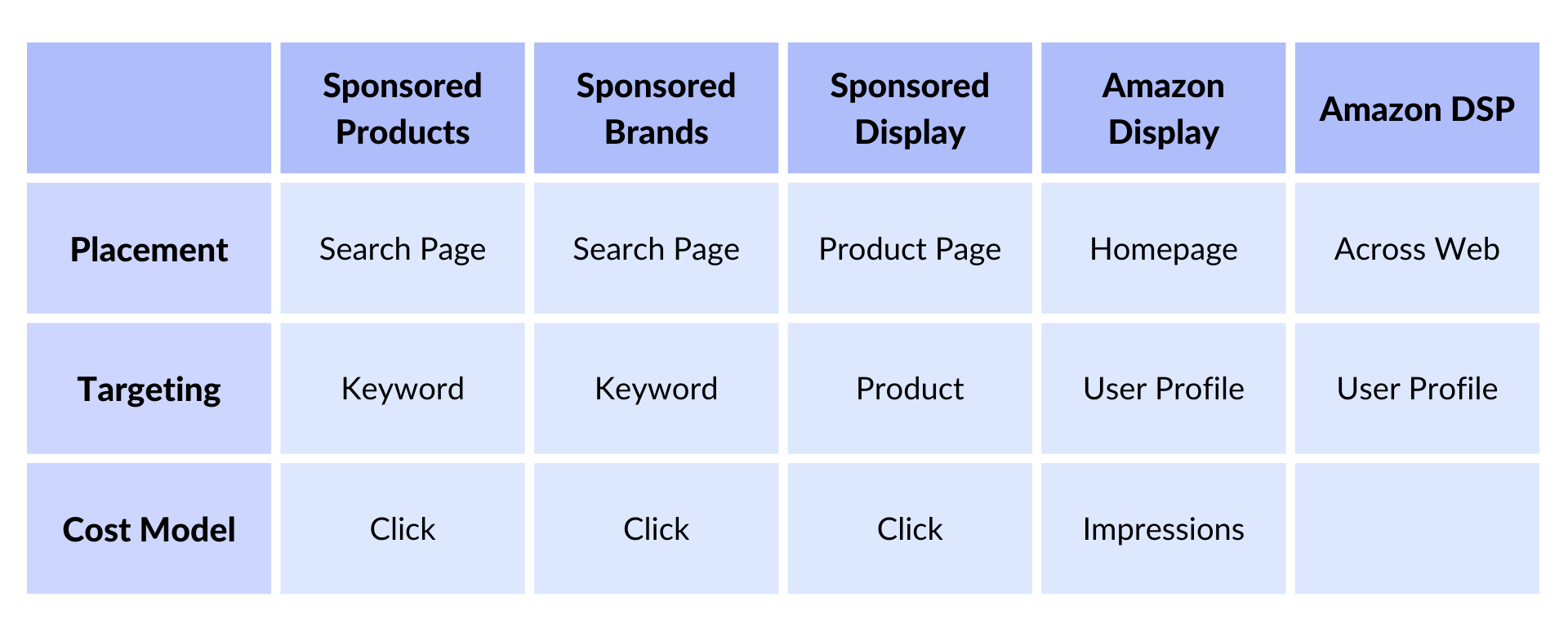Introduction to Amazon Ads: How it works and its relevance for your eCommerce business

Amazon is among the leading eCommerce sites in India with more than 200 million active users. For anybody managing a brand or product with the intent to sell online, it is a no-brainer that the products be listed on Amazon so that they can be discovered by millions of eCommerce shoppers.
However, with millions of products listed on the platform, discoverability is a key challenge. It is critical to get more users to discover your product on the platform for sales to grow. In a highly competitive environment, organic discoverability may not be enough and Amazon ads play a critical role in driving discoverability for products, which in turn drives sales.
What is Amazon Ads?
Amazon Ads brings on-platform marketing solutions for eCommerce businesses that want to drive their sales through Amazon. There are different ad placements that Amazon offers, ranging from the homepage right when a user opens the app, to the search page that appears when a user searches for a particular query.
Let’s understand the different types of Amazon Ads in detail.
Types of Amazon Ads
Sellers on Amazon can use a range of ad formats and placements that function on either pay-per-click or pay-per-impression.
- Amazon Sponsored Products
In sponsored product ads, the products will be displayed for specific keywords and phrases (that advertisers decide). Sponsored products are displayed throughout the search page across all ranks with a sponsored label. Upon clicking on the sponsored ad, the users are taken to the product detail page. Sponsored Product ads are among the most commonly used Amazon ad forms and they operate on the Pay-Per-Click or PPC model.

2. Sponsored Brands (Headline Ads)
Sponsored Brands or Headline search ads, appear as a banner above the search results. Headline ads are a useful tool for promoting multiple products of a brand at the same time. The banner generally includes the brand logo, a key callout on the text, and its most popular products. Clicking on the banner redirects the users to a landing page where they can learn more about the brand and buy promoted products. Sponsored Brands ads also operate on the PPC model.

3. Sponsored Display Ads
Sponsored Display ads are not shown on the search result page, but on the product detail page under the “similar products” or “review” section. These ads are therefore not targeted to any particular keyword, but to specific products.
The product detail page is when the user is closest to checking out and therefore an effective place to influence the purchase journey. Sponsored Display Ads, similar to the search page ads also operate on the PPC model.

Amazon Display Ads
The models discussed so far are placed further down the shopper journey, either on the search listing page or the product detail page. However, Amazon Ads also offers a placement to brands to show ads on the Amazon home page itself.
These ads can be targeted to specific user types on the basis of demographics, past purchases, etc., and are charged on a CPM (cost per mille) basis, which means that the brands incur costs on impressions, and not on clicks.
Amazon DSP (Demand-Side-Platform)
The models discussed so far operate on a PPC basis and apply to ads on the Amazon platform specifically.
But even brands that aren't selling on Amazon can use Amazon Ads to generate more sales. Amazon DSP (demand-side platform) is a service that helps brands set up and display ads on Amazon-owned platforms.
With the expansion of Amazon-owned properties, the eCommerce company has access to a larger user base that benefits from its entertainment services. And brands can show their ads on Amazon-owned and third-party networks. Brands can put video ads on sites like Fire TV, IMDb, and Twitch, or run audio adverts on Alexa and Amazon Music.
Summary of Amazon ad types

How to use Amazon Ads for better results?
In today’s digital world, a shopper’s journey is much more complex. A shopper can start looking for a product on channel A and could end up buying a product from channel Z. The complexity also arises from shopper drop-offs across touchpoints on the journey. That is why a brand needs to follow a full-funnel advertising strategy so that it can reach customers in different ways.
The first step within the full-funnel marketing strategy is to generate interest from a large group of customers. As we move down the funnel, it gets narrower, and the marketing efforts become more targeted, going after the users who are most likely to buy.
Amazon Ads are a great way for brands to reach consumers very close to the purchase stage on the journey. As a general direction, it is most prudent to therefore leverage Amazon ads for lower-funnel marketing tasks only, rather than upper-funnel tasks like building awareness. However, Amazon’s diverse ad ecosystem does give brands avenues for marketing activities across the funnel.
Benefits of Amazon Ads over Facebook and Google Ads
- Shopping intent on Amazon
People use Google primarily to seek information, while Facebook platforms are used to interact with friends and consume entertaining content from creators and celebrities. Displaying ads on these platforms helps increase the brand’s awareness but it isn't ideal to drive purchases. However, people who use Amazon are probably looking to buy something. Nearly 54% of product search takes place on Amazon (globally). Hence, running ads on Amazon, an online marketplace increases the chances of reaching customers who are more likely to make a purchase.
2. Pay-per-click model
Amazon Ads works on PPC (pay-per-click) model (like Google ads). This means that advertisers on Amazon are required to pay only when customers click on their adverts and not for impressions. Unlike Google Ads and Facebook Ads, advertisers do not have to pay every time the ad is viewed by any new user. This allows advertisers to manage their marketing budget such that they only pay for clicks.
3. Diversity of ad solutions
With its growing product line, Amazon provides many alternatives for brands to display their ads to a range of customers across more channels. Apart from bidding on keywords, brands can also run video and audio ads on Amazon-owned platforms. With more advertising options, brands have the freedom to experiment with different tools and select the one (or more) that would deliver the most relevant results for their marketing campaigns.
In Conclusion
Putting your Amazon ads in the right place can help in increasing reach and generate more sales in the long run. In fact, a full-funnel approach can help you show the product to the right customer at the right stage in their shopping journey. If you wish to increase brand awareness, try audio and video Amazon ads. If you are looking to boost sales, you should focus on pay-per-click advertisements. Amazon advertising tools are helpful for brands to measure and maximize returns. However, you need to learn Amazon marketing and eCommerce marketing to best optimize your ad campaigns.
Become an eCommerce specialist with digiaccel learning.

